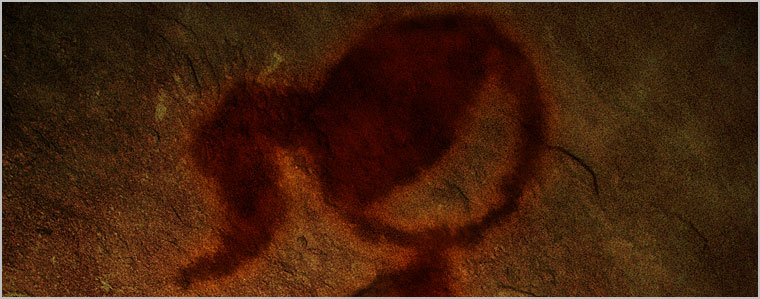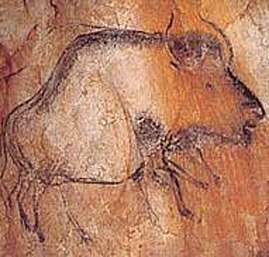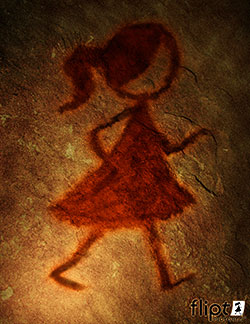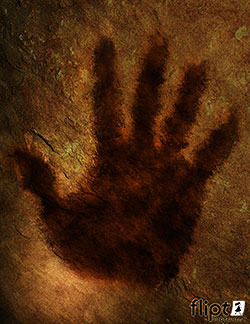
Where In Animation History Is Our Flipt Pictures Girl? #1
Welcome to the first installment of our blog series about animation history. In this post we find our Flipt Pictures Girl in mid-stride at the earliest known origins of animation and illustration, some 30,000 years ago, in a cave painting.

Running Bison, Chauvet Cave, France.
Photo Courtesy: Time Magazine, February 13, 1995
Ever since we could, we have wanted to leave our mark, illustrate what we’ve seen, tell our stories … just communicate and let others know we were here. Back then we did it with cave paintings, today the internet seems to be our modern day cave wall.
It’s easy to see the artists then were using illustration to communicate what they saw … bears, bison, horses, lions, rhinos, etc. But how does animation fit into this? Well just this last year, in the June 2012 issue of Antiquity archaeologist Marc Axéma and artist Forent Rivère, suggested Paleolithic artists used animation effects in their cave paintings. As evidence of this, they point to those cave paintings where the animals have multiple heads or limbs like in the Running Bison painting to the left.
Their theory is that when a flickering torchlight is passed over them, it gives them movement and creates a brief animation. I played around with this a little bit in the video below and you can somewhat see their point.
Of course, anything illuminated by firelight seems magical. But even without the magical flicker of the torchlight, it does appear evident, with the superimposed images of multiple heads and limbs, that these artists were trying to convey the perception of motion in their cave paintings. Axéma and Rivère show this in their video below by putting the superimposed images of some of the cave paintings together sequentially.
Animation is the illusion of movement. And I think those Paleolithic artists were definitely trying to do that with their cave paintings even if they might not have had the technology to view those paintings in motion as we do today. Who knew animation was so old?
If you would like to watch a fascinating film about the earliest known cave paintings, which were discovered in France in the Chauvet Cave in 1994, check out The Cave of Forgotten Dreams. These cave paintings have been dated back to more than 30,000 years ago. The film was shot in 3D and is one of the few films I would recommend watching in 3D. It is pretty amazing to be able to see these paintings along the contours of the cave walls. You can check out the trailer below.
And Subscribe to our E-List here!



No Comments